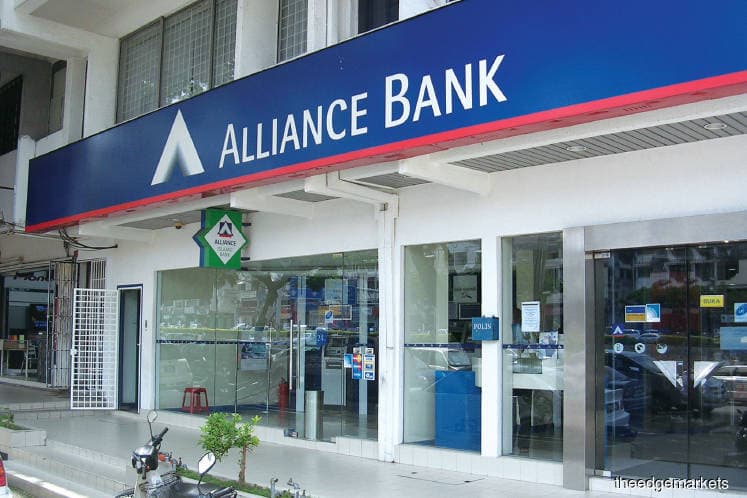
This article first appeared in The Edge Malaysia Weekly on April 15, 2019 - April 21, 2019
IT may be the smallest bank in the country, but there’s no reason Alliance Bank Malaysia Bhd can’t survive as a standalone bank for the next few years, analysts say.
“I don’t think there’s any urgent need for it to merge [with another bank]. They’ve found a niche in the smaller SME segment, which works to their advantage. And because they are small, they seem more nimble in their ability to innovate,” a banking analyst from a local research house tells The Edge.
In an interview with The Edge, CEO Joel Kornreich offered no clues about whether mergers and acquisitions were part of the group’s three-year plan. The bank is often viewed as an M&A target given its size. “As management, we don’t comment on inorganic growth ... it’s always up to the shareholders. The only thing that I’ll say is that we are 100% focused on the business that we’re conducting to optimise and maximise the returns.”
Alliance Bank is backed by Singapore’s state-owed investment firm Temasek Holdings. Temasek’s interest in the bank is held through Duxton Investments Pte Ltd, which holds 49% of Vertical Theme Sdn Bhd, which in turn controls 29.06% of Alliance Bank.
The remaining 51% stake in Verticle Theme is held by Langkah Bahagia Sdn Bhd, owned by Singapore hotelier Ong Beng Seng, Ong Tiong Sing and corporate adviser Seow Lun Hoo. The three individuals emerged in Langkah Bahagia in April 2016 and are said to be parties friendly to Temasek. As such, analysts say corporate developments down the road cannot be discounted.
Temasek is also the single largest shareholder of Asean’s top lender, DBS Group Holdings Ltd.
“There is also this question — while there may be value in buying Alliance Bank, who would buy it? None of the big banks are in acquisition mode given the tough operating landscape,” says an industry observer.
Bloomberg data shows that most analysts like the stock, with 12 rating it a “buy”, four a “hold” and one, a “sell”. The average target price for the stock is RM4.67, which implies a potential upside of 14.5% from its closing price of RM4.08 on April 11. Year to date, it has gained a slight 1.5%.
“I quite like their strategies and products as they are doing things differently. For example, their Alliance One Account (AOA), a loan consolidation account, provides some value to the customer,” an analyst says.
The biggest worry analysts have about Alliance Bank, going forward, is its ability to control asset quality. The lender is increasingly shifting towards higher risk-adjusted return loans, such as AOA and SME loans, which come with better yields but relatively riskier profiles.
For now, the bank has managed its overall gross impaired loan ratio (GIL) well. At 1.28% as at end-2018, it was the third best in the industry.
“Only time will tell whether they are taking on too much risk. Borrowers of AOA, for instance, are people who are more indebted ... it’s only when you have multiple debt that you’d try to consolidate everything together,” notes one analyst.
Kornreich expects the group’s GIL ratio to remain stable at “around 1.3% to 1.4%” for the year ending March 31, 2020 (FY2020). He is not overly concerned about the SME segment and says the group is in “pretty good shape” in the property segment as it does not provide much financing for offices or malls.
The bank’s loan exposure to construction is just 1.4%, while in property/real estate non-retail, it is 20%.
A more imminent worry analysts have is the impact on the bank if Bank Negara Malaysia cuts the overnight policy rate (OPR) this year. Its next policy meeting is on May 7.
At 89.9%, the group has the highest proportion of floating rate loans compared with its peers, and hence, it would be the biggest loser in the event of a rate reduction.
“Based on our analysis, should a 25bps OPR cut occur in 2H2019, the group’s FY2020 net profit will be lowered by 3%,” says AmInvestment Bank Research in an April 4 report.
Most analysts, however, agree it’s just something the bank has to deal with.
“The one thing I’ve seen is that our banks have been really good at controlling their margins, so that would be a temporary blip, if an OPR cut happens,” remarks one.
Save by subscribing to us for your print and/or digital copy.
P/S: The Edge is also available on Apple's AppStore and Androids' Google Play.